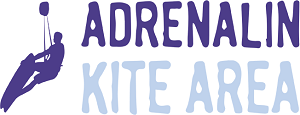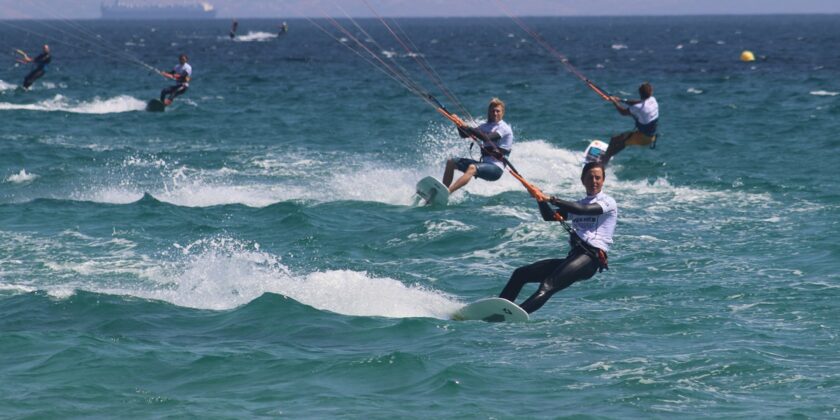Tarifa has become a hub for water sports enthusiasts, particularly kitesurfers, windsurfer and wingfoilers. With an increasing number of participants flocking to the waters, it is crucial to understand and adhere to the right of way regulations set by the International Kiteboarding Organizations IKO and VDWS. These rules ensure a safe and enjoyable experience for all, minimizing the risks and potential dangers associated with these exhilarating sports. In this article I combine the rules of both of them and want to help you to understand them.
The Importance of Right of Way Regulations:
The primary purpose of right of way regulations is to establish a clear and organized framework for navigation, allowing water sports enthusiasts to coexist harmoniously on the water. By following these rules, participants can anticipate the actions of others and avoid collisions, reducing the chances of accidents and injuries. Regardless of skill level, every kitesurfer, windsurfer and wingfoiler must familiarize themselves with these regulations and abide by them under all conditions.
Right of Way Regulations:
The IKO and VDWS have established a set of guidelines to govern the right of way for kitesurfers and wingfoilers. These rules ensure a safe and efficient flow of traffic on the water. Let’s delve into the key regulations:
1. Upwind Rider Priority:
The rider traveling upwind, i.e., against the wind, has the right of way. This allows them to maintain their course and avoid obstacles more easily. “Windward gives way to leeward.” This rule is easy to understand because the rider windwards has the full overview to leeward and can see other water sportsmen who are downwind of him.
2. Avoid Crossing Paths:
If the courses of two drivers cross, the driver on the starboard side (right-hand side) has right of way. The rider on the port side (left-hand side) should take evasive action and change course to avoid a possible collision. Wind from portside (seen from riding direction) gives way to wind from starboard. The two rider have their kite, sails or wings on different sides. If your left hand or foot is in front, the wind is coming from the left means from port side and you have to give way to the other rider who is on the starboard side with his right hand or foot in the front. The rider who has priority is obligated to remain the heading course.
3. Like in the normal traffic the faster rider who wants to overtake avoids the other rider. If you overtake someone you need to keep plenty of distance and the rider who´s being overtaken remains the course.
4. When you are kiting it doesn’t often suffice to give space. Also kites up to 28m faraway have to be coordinated by flying them high or low. To prevent crossing lines or tangling in a sail or wing we have to fly thew kite high if we are sailing on the upwind side and low riding on the downwind side. Give way upwind = kite up. Give way downwind = kite down or low. If you don t know what to do you always can stop and wait to solve a critical situation but careful not to fly the kite high if someone is passing by close to you upwind.
5. It helps a lot if you preform your give way maneuver’s on time, clearly and determined. Like that the other rider will see that you take note of him and he is not getting in stress or starts to leave his course to feel safer. This can cause a dangerous situation.
6. Give Way to Launching and Landing kiters:
Riders in the process of launching or landing their kites have priority. Others should steer clear and provide sufficient space for safe takeoff and landing procedures. Specially Tarifa with strong and gusty Levante wind needs full attention if you launch or land your kite and if you enter or leave the water. Make sure that there is enough safety area (no people or obstacles) leeward of you to be prepared if your kite is stalling and maybe hit the beach.
7. Give Way to Surfers and Swimmers:
Kitesurfers and wingfoilers should always yield to other water users, such as surfers and swimmers. It is essential to respect the presence of other beachgoers and maintain a safe distance to prevent accidents. If you have the option to pass leeward by someone on the beach it will be safer.
8. Maintain Control and Awareness:
All participants must maintain control over their equipment at all times. Being aware of other riders, obstacles, and changing weather conditions is crucial for safety.
The Consequences of Ignoring Right of Way Regulations:
Failure to adhere to right of way regulations can lead to accidents, injuries, and conflicts on the water. It not only endangers the well-being of participants but also poses a threat to others sharing the same space. The person responsible for the accident must bear the consequences.
Conclusion:
The right of way rules are fundamental for maintaining safety and order among kitesurfers, windsurfers and wingfoilers in Tarifa. It is the responsibility of every sailor to understand and follow these rules to ensure a pleasant and incident-free experience. By doing so, we can all enjoy the exhilaration of these water sports while minimizing the risks and dangers associated with them.
Lets prioritize safety, respect others on the water, and embrace the spirit of responsible water sportsmanship in Tarifa and beyond.
See you on the water,
Bernd Jenkner
Adrenalinkitearea Tarifa
All our courses include theory lessons where we explain and teach how to use the right of way rules

